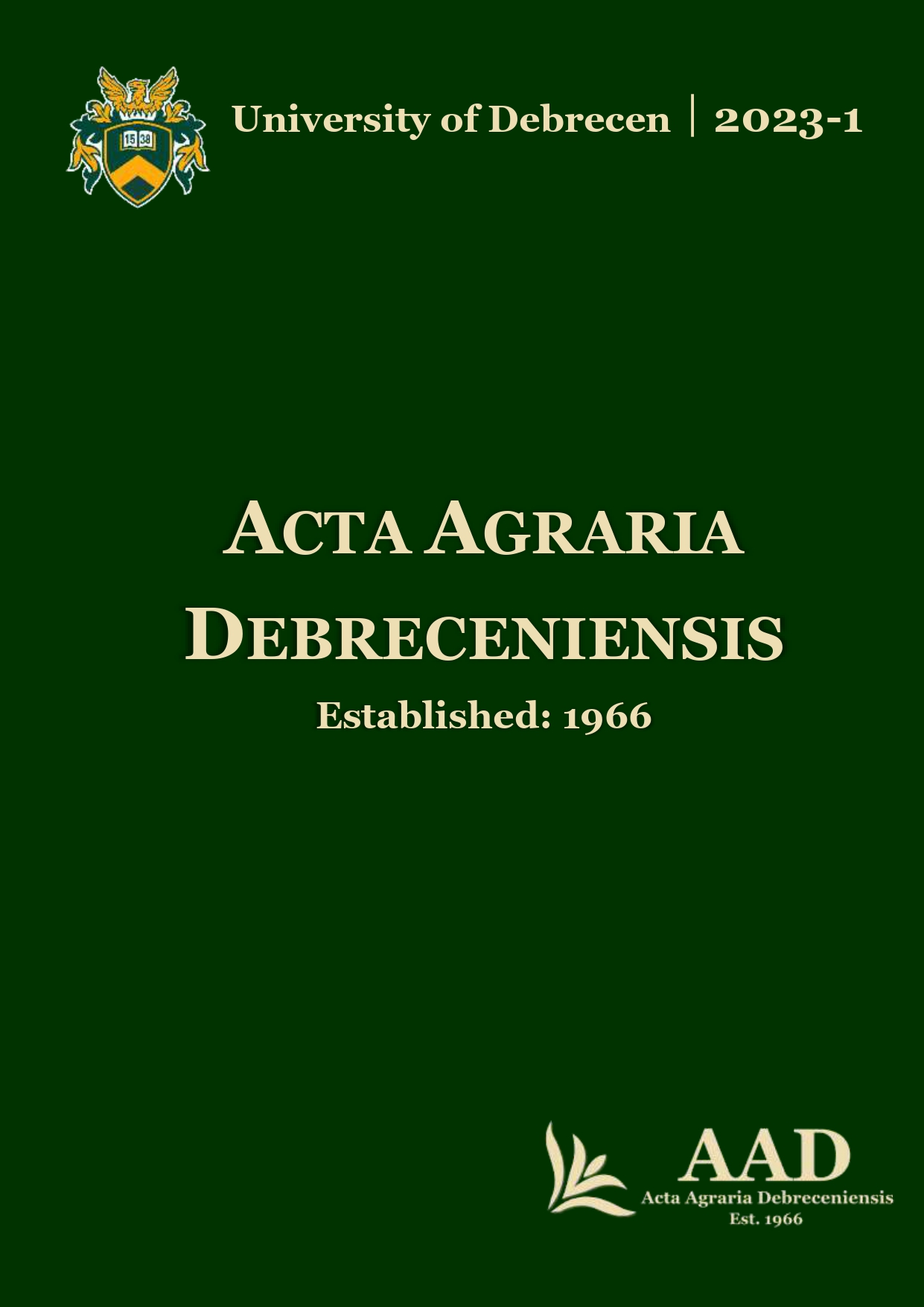Routine microscopy examination of faecal samples as a tool for detection of common gastrointestinal parasites: a preliminary report from two Hungarian farms
Authors
View
Keywords
License
Copyright (c) 2023 by the Author(s)

This work is licensed under a Creative Commons Attribution 4.0 International License.
How To Cite
Accepted 2023-02-14
Published 2023-06-05
Abstract
Gastrointestinal parasitism in ruminant animals is a cause of major economic loss incurred by the livestock industry. Regardless of the frequency of the adopted therapeutic and prophylactic deworming strategies, the parasitic burden in a farm should be assessed regularly. One of the most widely used techniques to do so is the microscopic faecal egg examination and faecal egg counting method. Despite the technique being almost a century old from its first adoption, the principle behind the newer techniques of faecal egg examination is the same. This technique is still being used in routine farm screening and monitoring gastrointestinal parasitic load and faecal egg count reduction testing to assess the anthelmintic efficacy of the drugs used. Thus, the tool remains a choice for preliminary screening for important parasites and the subsequent deworming strategy. Our study here was part of a larger survey on the treatment efficiency as well as a broad epidemiological study of the trichostrongyle parasites in Hungary. We present a preliminary report on the detection of common gastrointestinal parasites from two farms in Hungary, including a species-specific confirmatory microscopy for Haemonchus contortus eggs.
References
- Abbas, I.–Hildreth, M. (2019): Egg autofluorescence and options for detecting peanut agglutinin binding for the identification of Haemonchus contortus eggs in fecal samples. Veterinary Parasitology, 267, 69–74. https://doi.org/10.1016/j.vetpar.2019.01.009
- Besier, R.B.–Kahn, L.P.–Sargison, N.D.–Van Wyk, J.A. (2016a): Diagnosis, Treatment and Management of Haemonchus contortus in Small Ruminants. Advances in Parasitology, 93, 181–238. https://doi.org/10.1016/bs.apar.2016.02.024
- Besier, R.B.–Kahn, L.P.–Sargison, N.D.–Van Wyk, J.A. (2016b): The Pathophysiology, Ecology and Epidemiology of Haemonchus contortus Infection in Small Ruminants. Advances in Parasitology, 93, 95–143. https://doi.org/10.1016/bs.apar.2016.02.022
- Coles, G.C.–Bauer, C.–Borgsteede, F.H.M.–Geerts, S.–Klei, T.R.–Taylor, M.A.–Waller, P.J. (1992): World Association for the Advancement of Veterinary Parasitology (W.A.A.V.P.) methods for the detection of anthelmintic resistance in nematodes of veterinary importance. Veterinary Parasitology, 44(1–2), 35–44. https://doi.org/10.1016/0304-4017(92)90141-U
- Craig, T.M. (2018): Gastrointestinal nematodes, diagnosis and control. Veterinary Clinics: Food Animal Practice, 34(1), 185–199.
- Cringoli, G.–Amadesi, A.–Maurelli, M.P.–Celano, B.–Piantadosi, G.–Bosco, A.–Ciuca, L.–Cesarelli, M.–Bifulco, P.–Montresor, A.–Rinaldi, L. (2021): The Kubic FLOTAC microscope (KFM): A new compact digital microscope for helminth egg counts. Parasitology, 148(4), 427–434. https://doi.org/10.1017/S003118202000219X
- Cringoli, G.–Maurelli, M.P.–Levecke, B.–Bosco, A.–Vercruysse, J.–Utzinger, J.–Rinaldi, L. (2017): The Mini-FLOTAC technique for the diagnosis of helminth and protozoan infections in humans and animals. Nature Protocols, 12(9), 1723–1732. https://doi.org/10.1038/nprot.2017.067
- Gordon, H.M.–Whitlock, H.V. (1939): A new technique for counting nematode eggs in sheep faeces. J Counc Sci Ind Res, 12(1), 50–52.
- Jurasek, M.E.–Bishop-Stewart, J.K.–Storey, B.E.–Kaplan, R.M.–Kent, M.L. (2010): Modification and further evaluation of a fluorescein-labeled peanut agglutinin test for identification of Haemonchus contortus eggs. Veterinary Parasitology, 169(1–2), 209–213. https://doi.org/10.1016/j.vetpar.2009.12.003
- Nicholls, J.–Obendorf, D.L. (1994): Application of a composite faecal egg count procedure in diagnostic parasitology. Veterinary Parasitology, 52(3–4), 337–342. https://doi.org/10.1016/0304-4017(94)90125-2
- Nielsen, M.K. (2021): What makes a good fecal egg count technique? Veterinary Parasitology, 296, 109509. https://doi.org/10.1016/j.vetpar.2021.109509
- Presland, S.L.–Morgan, E.R.–Coles, G.C. (2005): Counting nematode eggs in equine faecal samples. Veterinary Record, 156(7), 208–210. https://doi.org/10.1136/vr.156.7.208
- Qamar, M.F.–Maqbool, A. (2012): Biochemical studies and serodiagnosis of haemonchosis in sheep and goats. Journal of Animal and Plant Sciences, 22(1), 32–38.
- Soulsby, E.J.L. (1968): Helminths, arthropods and protozoa of domesticated animals. Helminths, Arthropods and Protozoa of Domesticated Animals.
- Tariq, K.A.–Chishti, M.Z.–Ahmad, F.–Shawl, A.S. (2008): Epidemiology of gastrointestinal nematodes of sheep managed under traditional husbandry system in Kashmir valley. Veterinary Parasitology, 158(1–2), 138–143. https://doi.org/10.1016/j.vetpar.2008.06.013
- Taylor, M.A.–Coop, R.L.–Wall, R.L. (2015): Veterinary parasitology. John Wiley & Sons.

 https://doi.org/10.34101/actaagrar/1/12059
https://doi.org/10.34101/actaagrar/1/12059